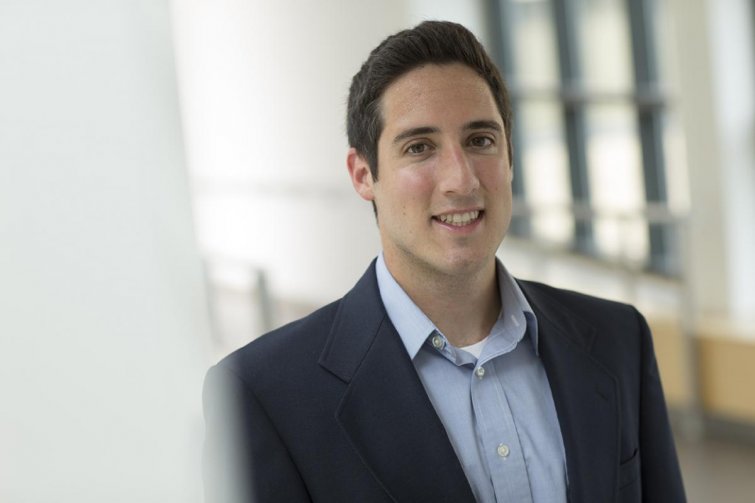Meet our innovator: Nicholas VanDillen
Eureka moment: Turning promising clinical technology—the iStrab device for measurement of strabismus—into a product for the medical marketplace
Hometown: St. Louis
Degrees: Bachelor’s degree in mechanical engineering with a minor in bioengineering (University of Dayton), Master of Science in biomedical engineering with a specialization in translational health technology (CWRU, expected in May 2016)
Dream job? Medical Device Developer/Entrepreneur
When Nicholas VanDillen started the biomedical engineering master’s degree track in translational health technology at Case Western Reserve University last year, he wasn’t just looking to get a degree—he was looking to launch his career.
He’d earned his bachelor’s degree in mechanical engineering from the University of Dayton, but it was his minor in bioengineering that really piqued his interest and led him to Cleveland and Case Western Reserve.
“There are so many places to make your way in the biomedical field,” he says. “And Northeast Ohio is a hub of sorts for health care innovation—I wanted to get involved in that space.”
So almost as soon as he arrived on campus, VanDillen started hunting for a real-world project with the potential to grow in to a startup. His mentor in the program, Colin Drummond, professor of biomedical engineering and assistant department chair, clued him in to a promising project that had stalled—it needed a leader, and VanDillen was hungry to take it on.
A student team working with a partner physician at University Hospitals—the late Jeffrey Blum—had invented the technology that would eventually become VanDillen’s iStrab device in 2011. The device is a screening and diagnostic tool for strabismus, the clinical term for the vision condition of being cross-eyed, which is also the No. 2 cause of blindness in the United States and affects 4 percent of children worldwide. The team had developed a prototype and earned approval to begin clinical trials, but Blum’s untimely passing in 2012 left the project rudderless.
Drummond put VanDillen in touch with the remaining team members—students in the university’s Master of Engineering and Management program—and they got to work on restarting the project. While VanDillen had never started a business, he did have experience in developing medical devices and knew he had the big-picture mentality to get the project going again.
Today 78 percent of children don't get screened or treated for this disorder, and there's absolutely no reason we can't and shouldn't improve on that. It's our job and our goal to make that happen.
The IStrab had clinical potential, but what it needed was a business plan and technical management. VanDillen launched his startup company LYGENT in March 2015 to help put the device on the path to commercialization and began pulling in funding, including a collaboration grant with Lorain County Community College (LCCC), which provided a physical home for his business in the Great Lakes Innovation and Development Enterprise incubator space located at LCCC, and a $25,000 award from LCCC’s Innovation Fund. He is currently pursuing other funding opportunities in the area and around the country.
“The opportunity was there—the technology was sound, the right people were floating around, all it needed was someone to bring it all together,” he says.
VanDillen is now at the helm of LYGENT while finishing up his master’s program at Case Western Reserve, leading a team of five employees and working with physicians at University Hospitals to fine-tune the current working prototype into a market-ready device so they can begin clinical trials. He says he’s in the ideal place to grow his startup, with access to collaborators at University Hospital, technical and business mentors at Case Western Reserve and a host of other university resources, including the students.
“I can’t stress enough the benefits from all the collaboration—it’s a great network,” he says.
And VanDillen plans to utilize all his available resources to turn LYGENT into a bigger company that will have a lasting impact on the patients it reaches.



